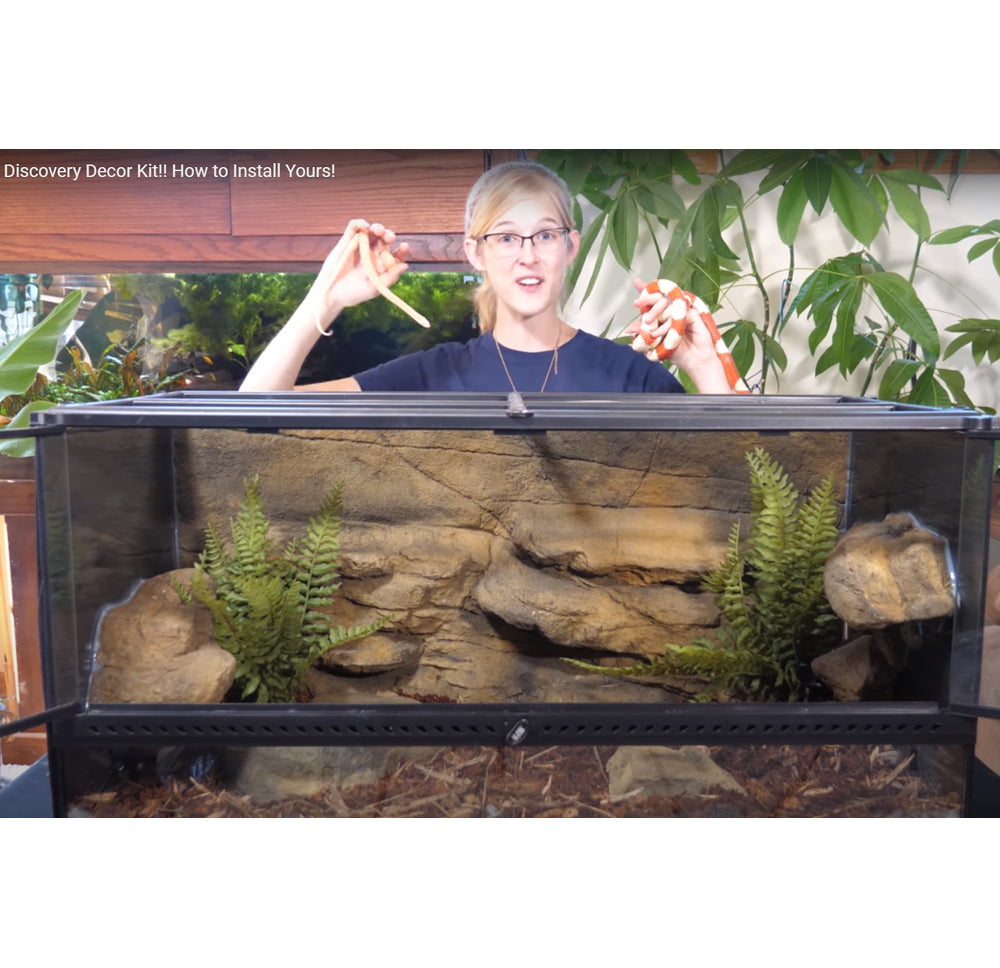As an avid reptile enthusiast, I can testify that the right enclosure decor not only enhances the aesthetic appeal of your pet’s home but also promotes their health and well-being. Let’s dive into the fascinating world of reptile enclosure decor!
Understanding the Importance of Enclosure Decor
Reptiles are unique creatures that require specific environments to thrive. The decor inside their enclosure plays a critical role in their overall health, happiness, and stress levels. But why exactly is decor so vital?
- Naturalistic Environments: Reptiles feel more at home in an environment that mimics their natural habitat.
- Hiding Spots: Proper decor provides hiding spots that are essential for reptiles to feel secure.
- Physical Activity: Climbing structures and obstacles encourage exercise.
- Humidity and Temperature Regulation: Specific materials can help maintain the correct humidity and temperature.
Types of Enclosure Decor for Reptiles
When designing your reptile’s habitat, there are various types of decor you can use, each serving a unique purpose. Let’s explore them in detail.
1. Substrates
Substrates provide the ground cover for your enclosure. Choosing the right substrate is crucial for both aesthetics and the health of your reptile.
| Substrate Type | Pros | Cons |
|---|---|---|
| Coconut Fiber | Natural looking, good humidity retention | Can mold if too wet |
| Reptile Carpet | Easy to clean, reusable | Limited natural appearance |
| Crushed Walnut Shells | Attractive, promotes burrowing | Can cause impaction if ingested |
2. Hides and Caves
Providing hides and caves is essential for your reptile’s sense of security. The right hiding spots can significantly reduce stress.
- Types of Hides: Natural rocks, commercial hides, and DIY options.
- Materials: Look for non-toxic materials that can withstand humidity.
3. Climbing Structures
Many reptiles, such as arboreal species, require climbing structures to explore and exercise. Options include:
- Bamboo poles
- Branches
- Commercial climbing platforms

4. Plants and Foliage
Live or artificial plants add beauty and help create a more natural environment. Here are some points to consider:
- Real Plants: Improve humidity and air quality but require maintenance.
- Fake Plants: Low maintenance, but ensure they are reptile-safe.
Designing Your Enclosure: Layout Tips
A well-planned layout enhances your reptile’s habitat while ensuring it’s easy for you to maintain. Here are some essential layout tips:

1. Zoning
Assign certain areas for specific activities such as basking, hiding, and climbing. This mimics natural behavior.
2. Elevation
Utilize vertical space by installing platforms or tall hides. This not only creates an interesting environment but also helps in temperature gradients.

3. Accessibility
Make sure all areas are easily accessible for cleaning and maintenance. Avoid overcrowding the enclosure with decor.
Choosing the Right Decor for Your Reptile Species
Different reptiles have varying needs. Here’s how to choose the best decor based on your reptile’s species.

1. For Arboreal Reptiles
Species like chameleons and geckos thrive in vertical spaces. Include plenty of climbing materials and foliage.
2. For Terrestrial Reptiles
Snakes and ground-dwelling lizards require a sturdy base with plenty of hiding spots and substrates for burrowing.

3. For Aquatic Reptiles
Turtles and other aquatic reptiles need water features, floating platforms, and smooth surfaces to avoid injuries.
Personal Experience: My Journey with Enclosure Decor
As a proud owner of three reptiles, I learned the ins and outs of enclosure decor the hard way. Initially, I filled their habitats with all sorts of decor without considering their needs. My first attempt was a disaster, as my bearded dragon felt stressed due to overcrowding. Over time, I discovered that simplicity is key. My current setup combines natural substrates, a few carefully placed hides, and climbing opportunities that my pets absolutely adore. This experience taught me the importance of research and observing my pets’ behaviors.

Maintaining Your Reptile Enclosure Decor
Regular maintenance is vital for keeping the decor hygienic and safe for your pets.
1. Cleaning Substrates
Replace or clean substrates regularly to prevent any buildup of bacteria.
2. Checking Hides and Climbing Structures
Inspect these regularly for signs of wear or damage. Replace items that aren’t safe anymore.
3. Plant Care
If you decide on live plants, ensure they are thriving and replace any that have died.
Common Mistakes in Enclosure Decor
Avoid these common pitfalls when setting up your reptile enclosure:
- Overcrowding: Too much decor can stress your pet.
- Using Toxic Materials: Always ensure materials are safe for reptiles.
- Ignoring Species-Specific Needs: Each species has unique requirements; do your research!
Frequently Asked Questions (FAQs)
What are the best decor materials for reptile enclosures?
Use non-toxic materials like natural woods, coconut fiber, and specially designed reptile decor items. Avoid anything treated with chemicals.
How often should I clean my reptile enclosure?
Spot clean daily, but a thorough cleaning of the entire enclosure should be done every 2-4 weeks, depending on size and species.
Can I use real plants in my reptile enclosure?
Absolutely! Many reptiles benefit from live plants, but ensure they are non-toxic and suitable for your specific reptile species.
How can I create a humidity gradient in the enclosure?
Use a combination of substrates that retain moisture and arrange decor to create areas of varying humidity levels.
Are there specific decor items that can help with basking?
Yes! Items like flat rocks or heat lamps positioned near climbing structures can provide excellent basking spots.